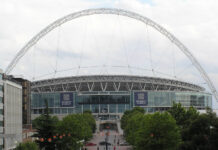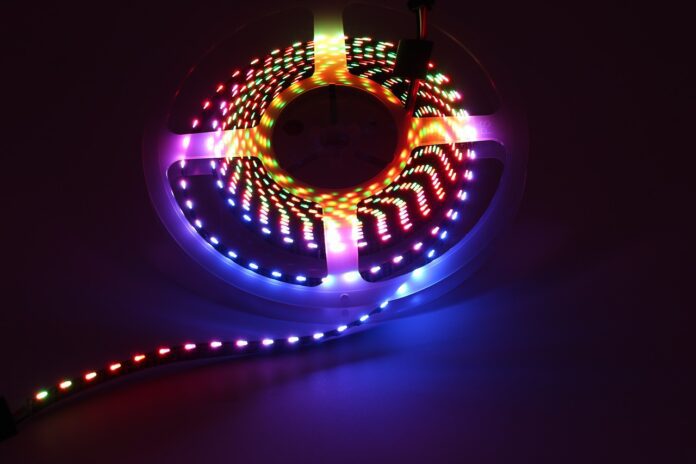LED stands for light-emitting diode. It is a semiconductors device that emits light when an electric current passes through it. The light-emitting diodes (LEDs) are typical standard sources of light that are used in a range of applications ranging from mobile phones to billboards. They are often seen in gadgets that show time and other types of data. LEDs are the most widely utilized form of semiconductor diode accessible today. When coupled with forward bias, it generates both visible lights as well as invisible infrared light. Read on to learn more about LEDs and their functions
How do LEDs function?
LEDs or Light-emitting diodes use electroluminescence as their operating mechanism. When current flows through the diode, both minority & majority electric charges re-join at the junction. Photons are emitted as energy during recombination. The light intensity rises & reaches a maximum as forward resulting voltage.
Categories of LEDs
Light-emitting diodes (LED) are classified into numerous categories, some of which are as follows:
- GaAsP: Orange to red
- AlGaAsP: High red, orange-red, orange, and yellow
- GaP: Red, yellow, and green Zinc Selenide (ZnSe) – blue
- SiC: Blue as a substrate
- GaAs: Infrared
Some of the advantages of employing a light-emitting diode
There are many advantages of LEDs or Light-emitting diodes. Some of them are given below:
- LEDs or Light-emitting diodes are less costly and take up less space.
- LEDs are used to manage electricity.
- The LED intensity may be adjusted using the microcontroller.
- A lengthy life expectancy.
- Efficient in regards to energy use and power consumption as compared to conventional sources
- There will not be any pre-game warm-up.
- Rugged and long-lasting as compared to other sources.
- It is unaffected by cold temperatures.
- Excellent colour rendering in all directions.
- Controllable and non-harmful to the environment.
LED Varieties
As you know, LED stands for light-emitting diode, and they are classified into numerous categories. The wide varieties of LEDs are as follows:
- LEDs with through-holes
- LEDs with SMDs (Surface Mount Light-Emitting Diodes)
- LED miniatures
- LEDs with two colours
- LED RGB (Red-Blue-Green LED)
- LEDs with High Power
- LED with alphanumeric characters
Uses of LEDs
There have been many uses for LEDs have been found. Some of these uses are given below. Check them out.
- Backlighting LEDs used for TV
A TV’s backlight is the biggest power-consuming source. LED applications may provide an efficient energy reduction. Using an LED on the margins of the TV will be a cost-effective option. The use of LEDs right behind the panel improves contrast. LEDs have surpassed CFLs and LCDs in terms of TV backlighting.
- It is utilized in the backlighting of smartphones.
Because of the use of LEDs, the backlight layout of the phone may be thinner and less costly. LED prices may differ depending on the dimensions of the phone display. Because of the lower output voltage, they have a longer battery life.
- LED Display Applications
LED display boards, billboards, and other types of outdoor advertising are becoming more widespread these days. In sign boards that have several languages communicating signals, the usage of much more LEDs will be useful in terms of reduced power consumption.
- These are found in automobiles.
LEDs are increasingly being used in the automobile sector. With LEDs, electricity is conserved, and there is sharper vision. These are often utilized at the back & rear of a vehicle to improve accessibility. LED lighting may increase the safety of cars and pedestrians since it boosts visibility while it is ON, OFF, & muted in any portion of the route.
- LEDs in use in Dimming Different Light sources
A few LED uses include light dimming, which helps to reduce energy usage.
- This dimming function is also found in appliances, and it comes in two varieties.
- Dimming all LEDs at once is known as global dimming.
- Dimming is used when LEDs are dimmed separately.
Conclusion
This article provides an overview of the LED, its types and applications of light-emitting diodes. We hope that by reading this essay, you have learned some fundamental knowledge about the light-emitting diode and are able to answer the question: What are LED and its uses? If you have any questions concerning this post, please leave a remark in the space below.
Help keep news FREE for our readers
Supporting your local community newspaper/online news outlet is crucial now more than ever. If you believe in independent journalism, then consider making a valuable contribution by making a one-time or monthly donation. We operate in rural areas where providing unbiased news can be challenging. Read More About Supporting The West Wales Chronicle


























